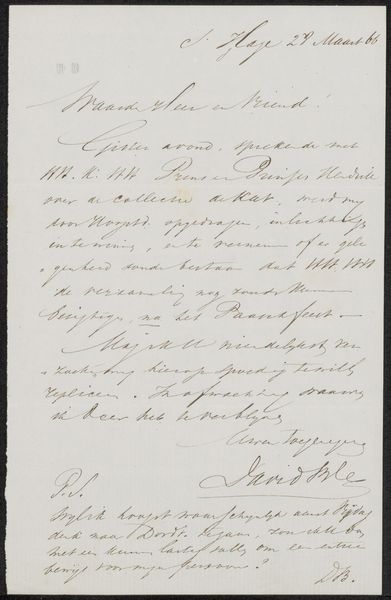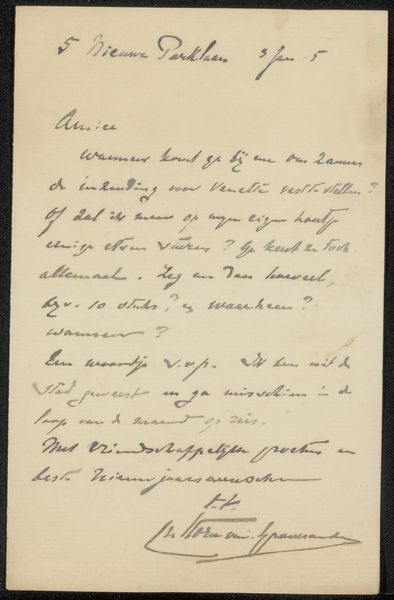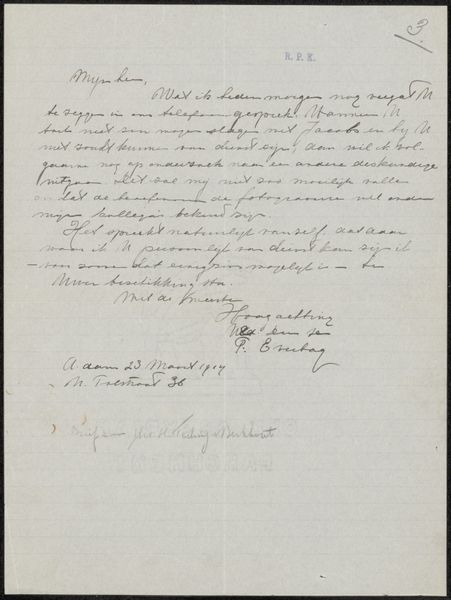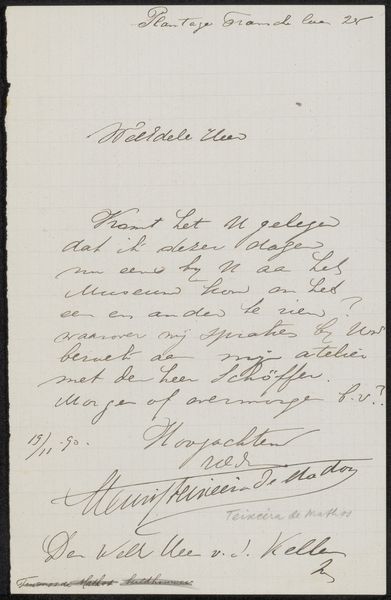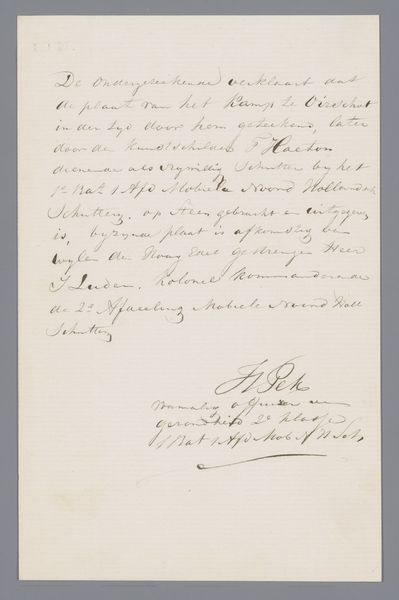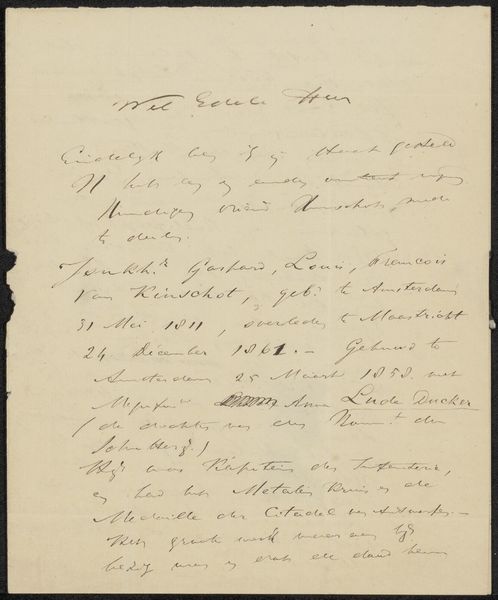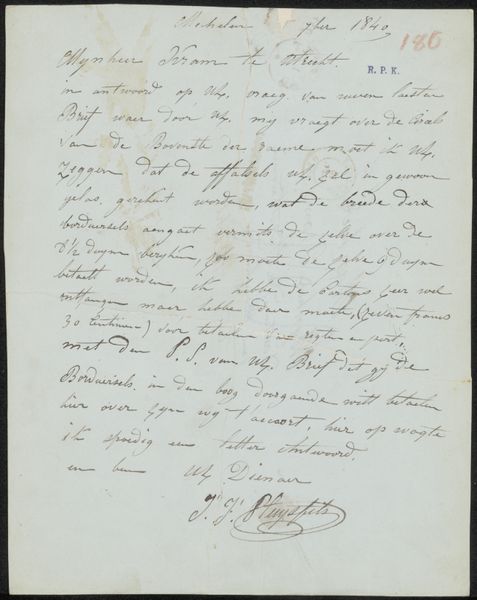
Copyright: Rijks Museum: Open Domain
Editor: This ink drawing, “Brief aan anoniem,” possibly from the 1860s by Joseph Hartogensis, is fascinating. It appears to be a handwritten letter, almost a glimpse into a personal sketchbook. It seems so informal and intimate. What's your interpretation of it? Curator: As a historian, I find this piece compelling for the insights it offers into 19th-century communication and social practices. The very act of handwriting a letter, before widespread telephony or email, carried a different weight. What does the dating "Possibly 1861-1868" suggest to you? Editor: It indicates uncertainty, perhaps because the handwriting is difficult to decipher fully or the letter is incomplete? Curator: Precisely. And that incompleteness, or sketchiness, points to a kind of private discourse. This wasn't intended for formal display, like a painted portrait, but rather immediate exchange, or even contemplation, reflecting the increasing emphasis on personal expression during the Romantic era. Do you think its current display in the Rijksmuseum alters its original meaning? Editor: Absolutely. In a museum, it becomes an object of historical and artistic interest, analyzed and interpreted, whereas originally, it was a simple means of communication between two people. Curator: Yes, it transforms the document. We now consider its aesthetic qualities - the flourishes of the pen, the composition of text - as artistic choices rather than solely utilitarian ones. Museums play a huge role in ascribing that artistic merit to something, elevating the mundane to the significant. Editor: That's so true. It is really amazing how context and the institutional framework shift our understanding of something so personal into a cultural artifact. Curator: Indeed. This brief offers insights into the past, reshaped by present contexts.
Comments
No comments
Be the first to comment and join the conversation on the ultimate creative platform.
